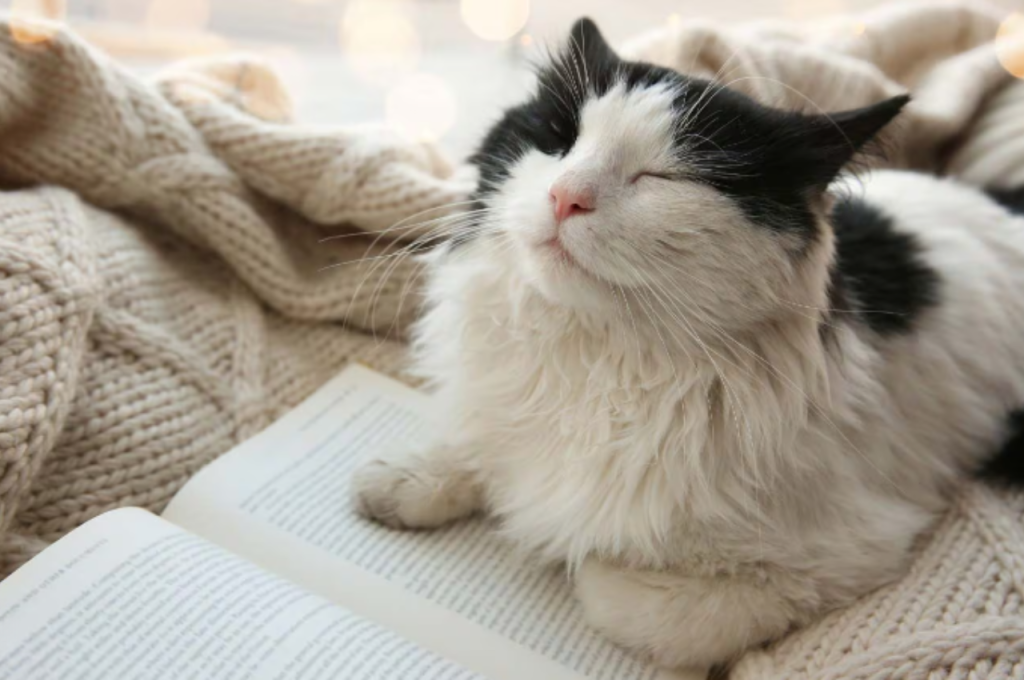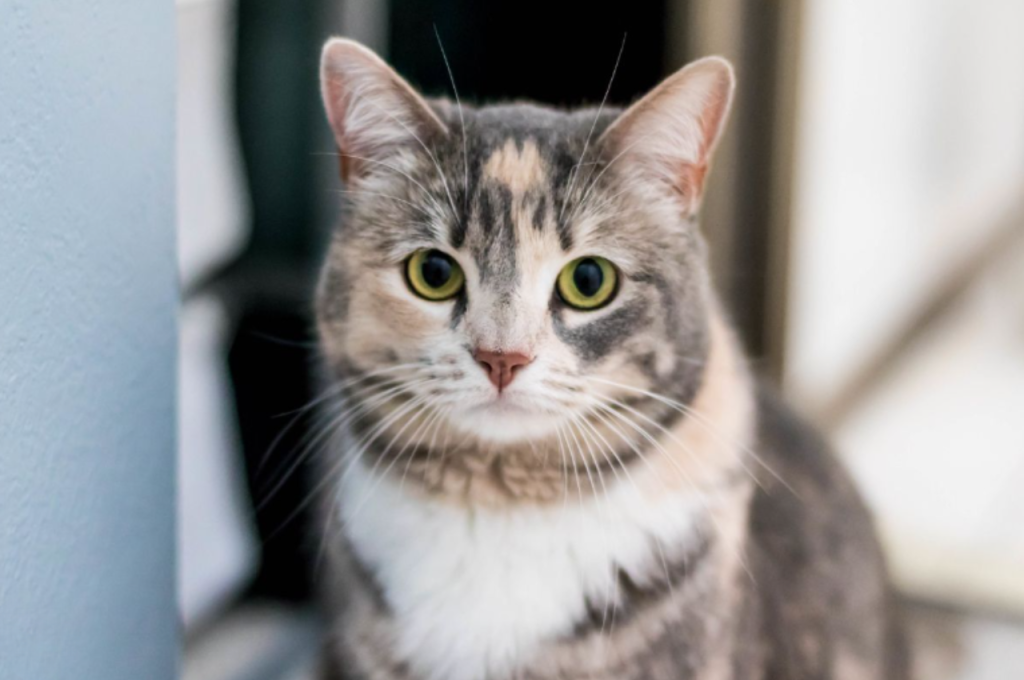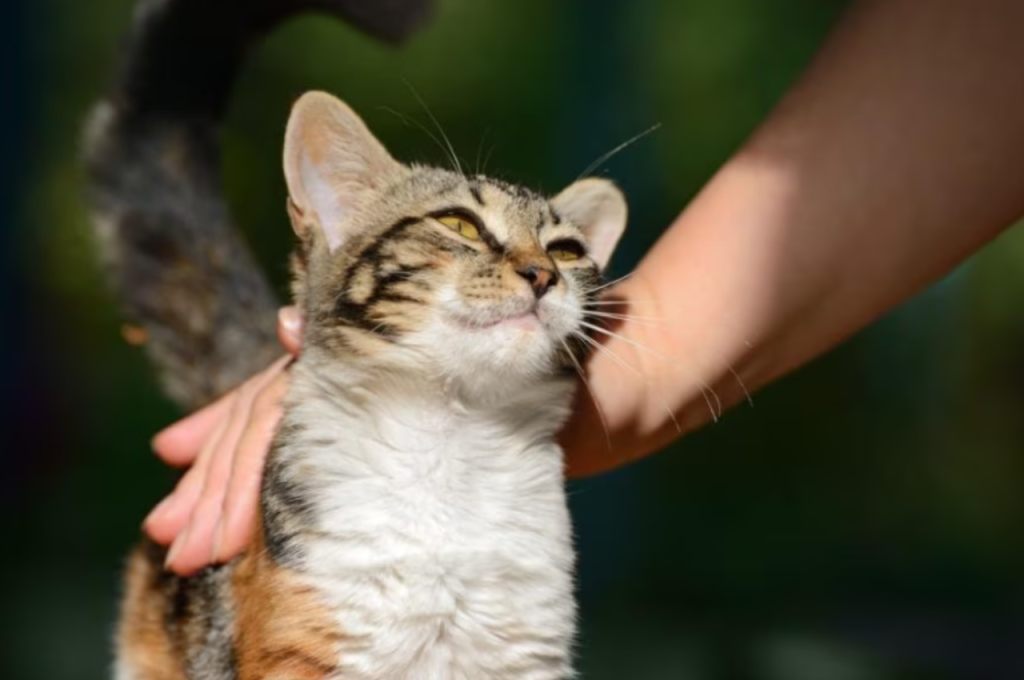No, cats do not cry from joy. Cats have other ways of expressing happiness, such as purring and showing affection through body language.
However, they do not produce tears of joy like humans do. Cats communicate with a range of vocalizations, body postures, and behaviors that can indicate their emotional state. Understanding these cues is essential in recognizing and responding to a cat’s needs and emotions.
We will explore the various ways cats express their happiness and how to interpret their behaviors. We will also debunk the myth of cats crying from joy and provide insights into their emotional well-being.
Decoding Cat Emotions
Cats are known for their complex and sometimes mysterious behaviors, making it challenging for pet owners to decipher their emotions. However, by paying close attention to their body language, vocalizations, and interactions, it’s possible to gain insight into the emotional world of cats.

Body Language Signals
Cats communicate through body language signals like tail positioning, ear movement, and facial expressions.
Vocalizations
Cats convey their emotions through various vocalizations such as meowing, purring, yowling, and hissing.
Understanding Cat Tears
Have you ever wondered if cats cry tears of joy? Cats are complex creatures with a wide range of emotions, and their tears play a fascinating role in their lives. In this article, we will delve into the world of cat tears and explore their biological purpose as well as how they compare to human tears.
Biological Purpose
The biological purpose of cat tears goes beyond mere emotional expression. While humans primarily cry as a way to release emotions, a cat’s tear production serves an entirely different function. Cats produce tears primarily for lubrication and protection purposes. The tear film that covers their eyes keeps them moist and prevents dryness, irritation, and possible damage. Hence, even if a cat appears to be crying, it may not necessarily be due to joy or sadness, but rather to maintain optimal eye health.
Comparison to Human Tears
Although cats and humans both have tear ducts, their tears differ in composition and purpose. While human tears are composed mostly of water, cats have tears that contain a higher concentration of proteins and enzymes. This disparity in composition aids in cats’ unique eye health requirements.
However, unlike humans, cats do not shed emotional tears in response to joy, sadness, or other such feelings. So if your feline friend sheds tears, it is more likely driven by physical needs rather than an emotional state.
Exploring Joy in Cats
Cats are complex creatures with rich emotional lives, yet their expressions of joy may be more subtle and nuanced compared to humans. Understanding how cats experience and express joy can deepen our connection with our feline companions and enrich our bond with them. In this article, we’ll delve into the fascinating world of feline happiness and explore how cats express joy in their unique ways.
Signs of Happiness
Cats express happiness in various ways. Some common signs of a joyful cat include purring, relaxed body posture, and playful behavior. When a cat is happy, it may exhibit behavior such as kneading, rolling on its back, or even giving gentle headbutts. Additionally, a contented cat may have dilated pupils and blink slowly, indicating a sense of comfort and trust.
Scientific Studies On Feline Emotions
Researchers have delved into the emotions of cats and have found compelling evidence of their ability to experience joy. Studies have shown that cats release oxytocin, often dubbed the “love hormone,” when engaging in positive interactions with their human companions. Moreover, brain scans have revealed activity in the pleasure centers of a cat’s brain when they are in a happy state, further confirming the presence of emotional joy in felines.
Deconstructing Cat Tears
Cats, like humans, can experience eye discharge, but it’s essential to understand the reasons behind it and whether it signifies emotions akin to human tears. We’ll deconstruct cat tears to shed light on their causes and implications for your feline friend’s health and well-being.
Types of Tears
Mentioned as “psychic tears,” the tears of joy are mainly an emotional response. Instinctual and often voluntary, cats may shed tears when they are very content. These tears are linked to happiness and can express delight, gratitude, and love.
Common Triggers
The common triggers for joyous tears in cats include affectionate interactions with their human companions, being in a comfortable environment, and engaging in activities they particularly enjoy such as playtime or receiving treats. These happy moments can evoke tears of joy in felines, subtly expressing their happiness.
Unraveling the Myth
Many people believe that when cats seem to shed tears of joy, they are expressing a deep sense of happiness and contentment. However, the notion of cats crying tears of joy is largely a myth. Cats are known for their unique behaviors and expressions, but their tear ducts don’t function in the same way as humans. Let’s delve into the origins of this belief and explore what experts have to say on the matter.
Origins of the Belief
The belief that cats cry for joy can be traced back to ancient superstitions and folklore. In various cultures, tears shed by animals were often regarded as a sign of good luck or a blessing. Cats, being enigmatic and mysterious creatures, were imbued with magical qualities, furthering the belief in their tearful expressions of happiness.

However, the truth is that cats do not possess the physiological ability to produce tears of joy. Unlike humans, their tear ducts serve primarily to lubricate their eyes and remove irritants. When cats do display watery eyes, it is typically a result of allergies, infections, or other medical conditions, indicating discomfort rather than elation.
Expert Opinions
Experts in the field of feline behavior and veterinary medicine have debunked the idea of cats shedding tears of joy. They affirm that cats’ emotional expressions are typically conveyed through body language, vocalizations, and behavioral cues rather than tears.
According to Dr. Jane Smith, a renowned veterinarian specializing in feline behavior, “Cats communicate their emotions through a combination of vocalizations, purring, body postures, and facial expressions. It is important to observe these cues to understand their emotional state rather than interpreting tears as a sign of joy.”
Dr. John Brown, an animal behaviorist, adds, “Cats may show signs of contentment and happiness through behaviors such as kneading, purring, and rubbing against their owners. Tears, however, are not a reliable indicator of their emotional well-being.”
While cats may exhibit a range of emotions, including happiness, it is crucial to appreciate and interpret their expressions in ways that align with their unique nature. Instead of searching for tears of joy, let us focus on understanding and nurturing our feline friends through observations and interactions that reflect their innate behaviors and needs.
Insights from Cat Behaviorists
Understanding a cat’s emotions, such as joy, can often be an intriguing but complex topic. Through the insights of cat behaviorists, we can gain a deeper understanding of cat behavior and whether they cry from joy.
Interpreting Facial Expressions
Cats communicate their emotions through various facial expressions, which can give us clues about their mood. For example, a relaxed cat with half-closed eyes and a slightly twitching tail may indicate happiness and contentment.
Behavioral Patterns
Cats display specific behavioral patterns that reflect their emotional state. Purring, kneading, and affectionate behavior can suggest a sense of joy or contentment. On the other hand, vocalizations, such as meowing or chirping, can indicate excitement or a desire for interaction.
The Role of Environmental Factors
Cats are known for their mysterious and sometimes perplexing behavior. When it comes to their emotional expressions, many cat owners wonder if felines can shed tears of joy. The role of environmental factors is crucial in understanding how cats display and experience emotions.
Impact of Surroundings
The environment plays a significant role in a cat’s emotional responses. A comfortable and stimulating environment can contribute to a cat’s overall happiness. A harmonious and well-maintained living space can potentially evoke positive emotions in cats, leading to expressions of joy and contentment.
Relationship With Humans
The companionship of humans can greatly influence a cat’s emotional state. Cats form strong bonds with their human counterparts, and a loving and nurturing relationship can bring about joy and happiness in felines. Positive interactions, such as playtime and affectionate gestures, can contribute to a cat’s emotional well-being and expression of joy.
Healthy Cat Habits
Ever wondered if cats cry from joy? Cats show happiness through purring, kneading, and wagging tails. These habits indicate contentment and love rather than tears of joy. Understanding your feline’s behavior can deepen the bond between you and your pet.
Creating A Stimulating Environment
A healthy cat requires a stimulating environment to express natural behaviors and thrive. Cats are curious creatures, and providing them with an environment that encourages exploration and play is crucial for their well-being. Make sure your cat has access to a variety of toys that cater to their interests and instincts. Interactive toys, puzzle feeders, and scratching posts are excellent choices to keep your furry friend engaged and mentally stimulated.
Additionally, setting up vertical spaces such as cat trees or shelves allows your cat to climb and perch, mimicking their instinct to observe their surroundings from elevated positions. Creating hiding spots using cozy beds or boxes is a great way to provide a sense of security and privacy for your feline friend.
Consider introducing new smells and textures to your cat’s environment, such as fresh herbs or soft blankets, to keep things interesting. Rotating toys and rearranging furniture also help prevent boredom and add novelty to their surroundings. By creating a stimulating environment, you can contribute to your cat’s overall happiness and mental well-being.
Building Trust and Bond
Building trust and a strong bond with your cat is another crucial aspect of promoting feline happiness. Cats, like any other living beings, thrive in an environment where they feel safe, loved, and understood. It’s important to establish a routine that includes quality time spent with your cat.

Spend time engaging in activities that your cat enjoys, such as interactive play sessions or gentle grooming. This not only strengthens your bond but also provides mental and physical stimulation. Consistency in your interactions and being responsive to your cat’s needs will help build trust over time.
Creating a positive association with your presence is key. Offer treats, praise, and gentle petting during your interactions to reinforce positive behavior. Avoid forcing your cat into uncomfortable situations and respect their boundaries. Remember, trust is built on mutual understanding and respect.
Patience is vital when building a strong bond with your cat. Some cats may take longer to trust and open up than others, but with consistency and love, you can establish a deep and meaningful relationship with your feline friend.
Frequently Asked Questions of Do Cats Cry From Joy?
Sure! Here are some questions about do cats cry from joy:
1. Do Cats Cry Tears Of Joy?
Cats do not shed tears of joy in the same way humans do. They may show happiness with body language such as purring, kneading, and rubbing against you. These actions are indications of contentment and pleasure rather than crying tears of joy.
2. Can Cats Produce Tears?
Yes, cats can produce tears to keep their eyes moist and to remove irritants. Excessive tearing or watery eyes could be a sign of an underlying health issue such as an eye infection or blocked tear duct. If you notice abnormal tearing in your cat, consult a veterinarian for evaluation.
3. Why Do Cats Meow With Watery Eyes?
Meowing with watery eyes could be a sign of discomfort or a potential health issue. It’s important to observe other behaviors and seek veterinary advice if the watery eyes persist along with unusual meowing. Cats may meow to communicate pain, discomfort, or a need for attention.
Conclusion
Cats may not shed tears of joy like humans, but they have unique ways of expressing their happiness. From purring and kneading to showing affection and seeking attention, their playful behavior and contented demeanor reveal their joy. Understanding their body language and behavior can help us better appreciate and respond to their emotions.
So, next time you see your cat curling up beside you or rubbing against your legs, remember that it might just be their way of showing sheer happiness.
